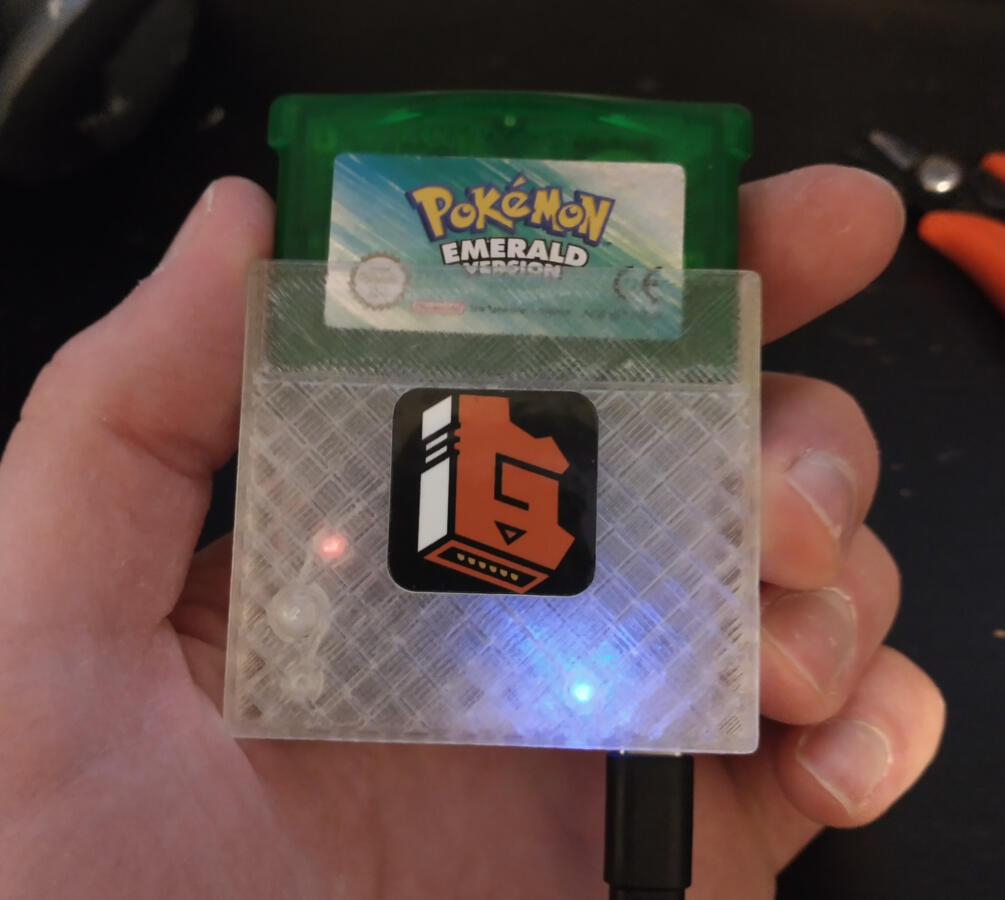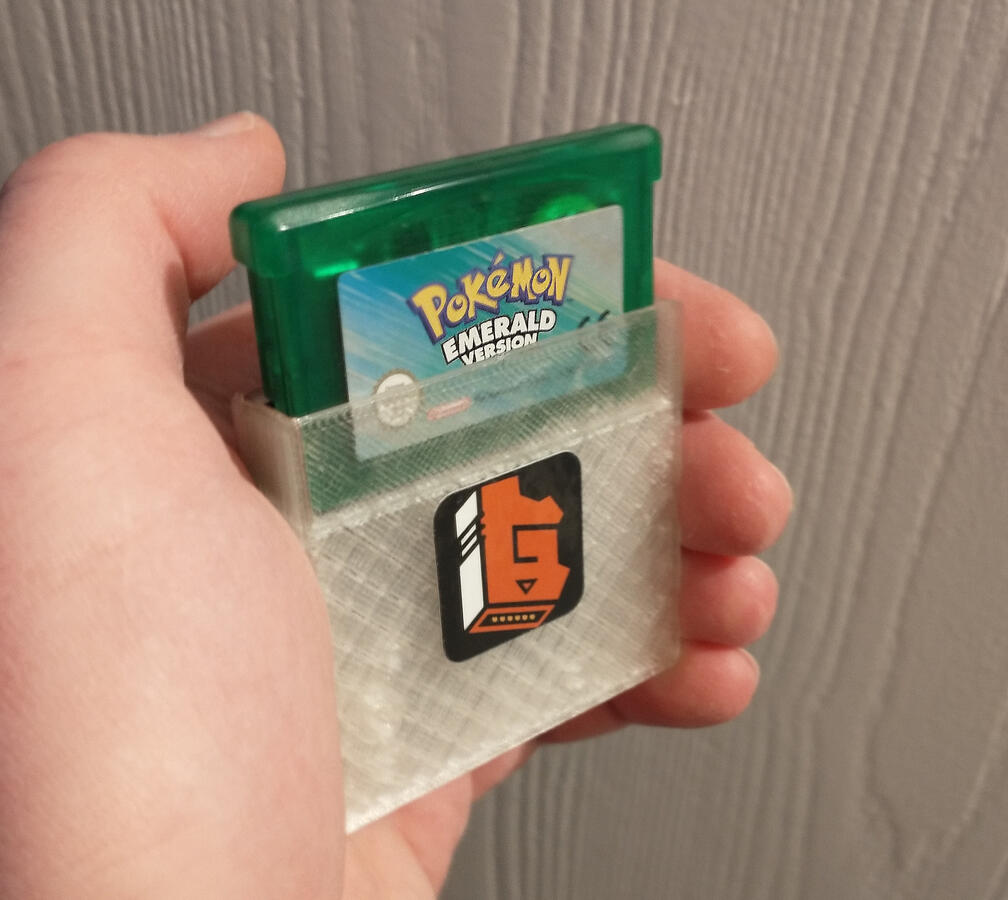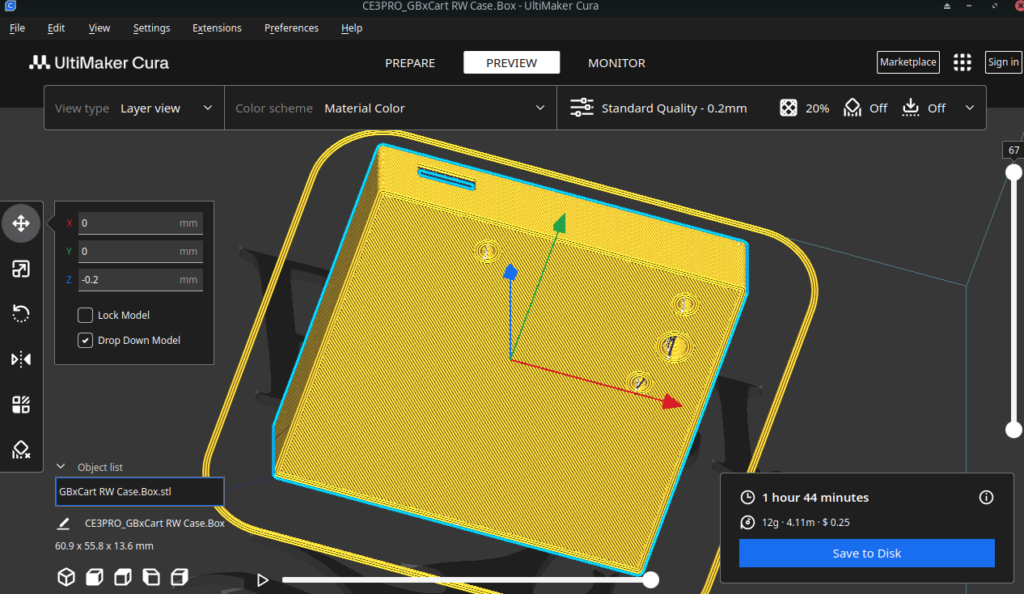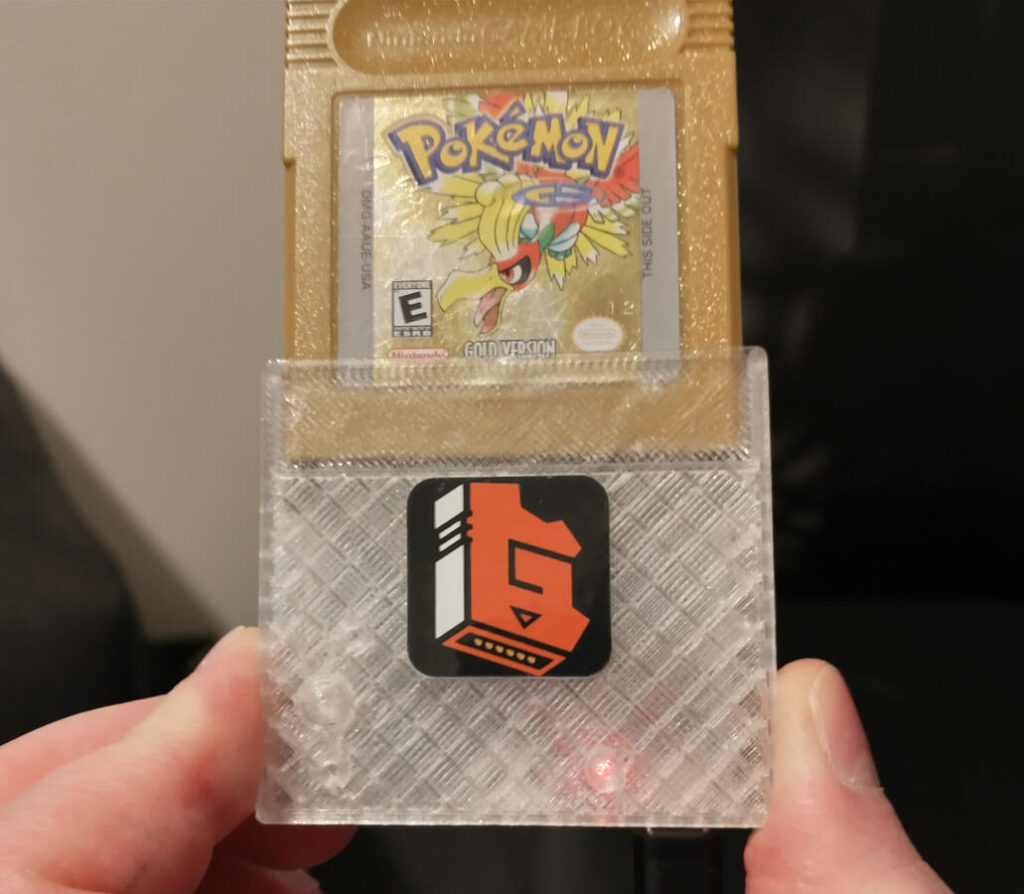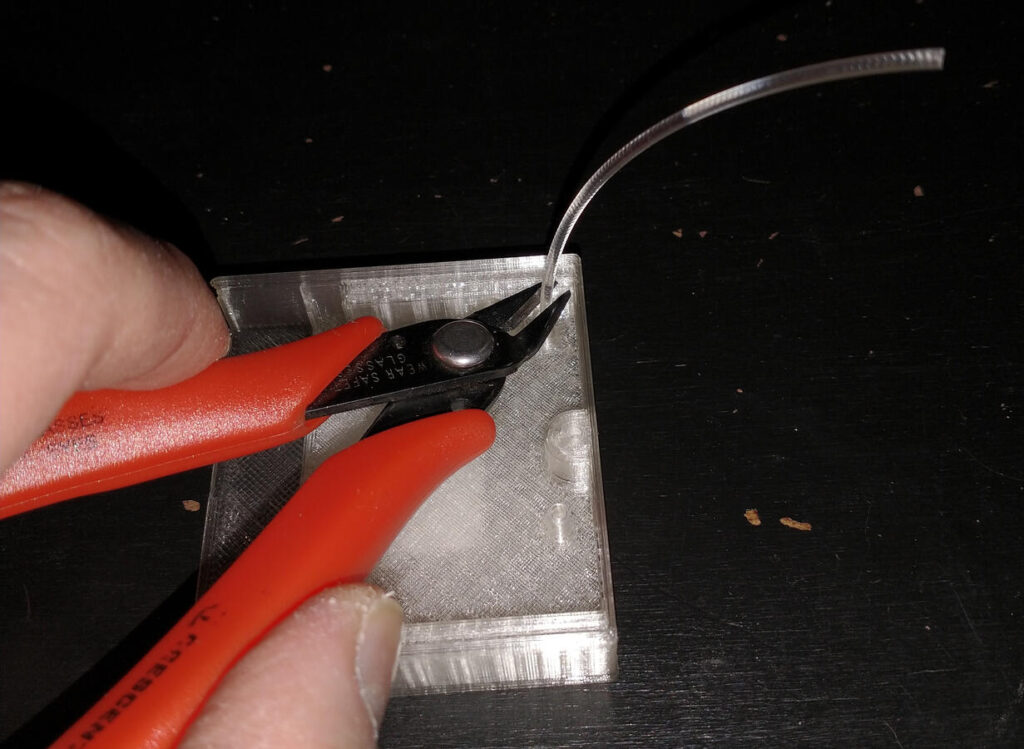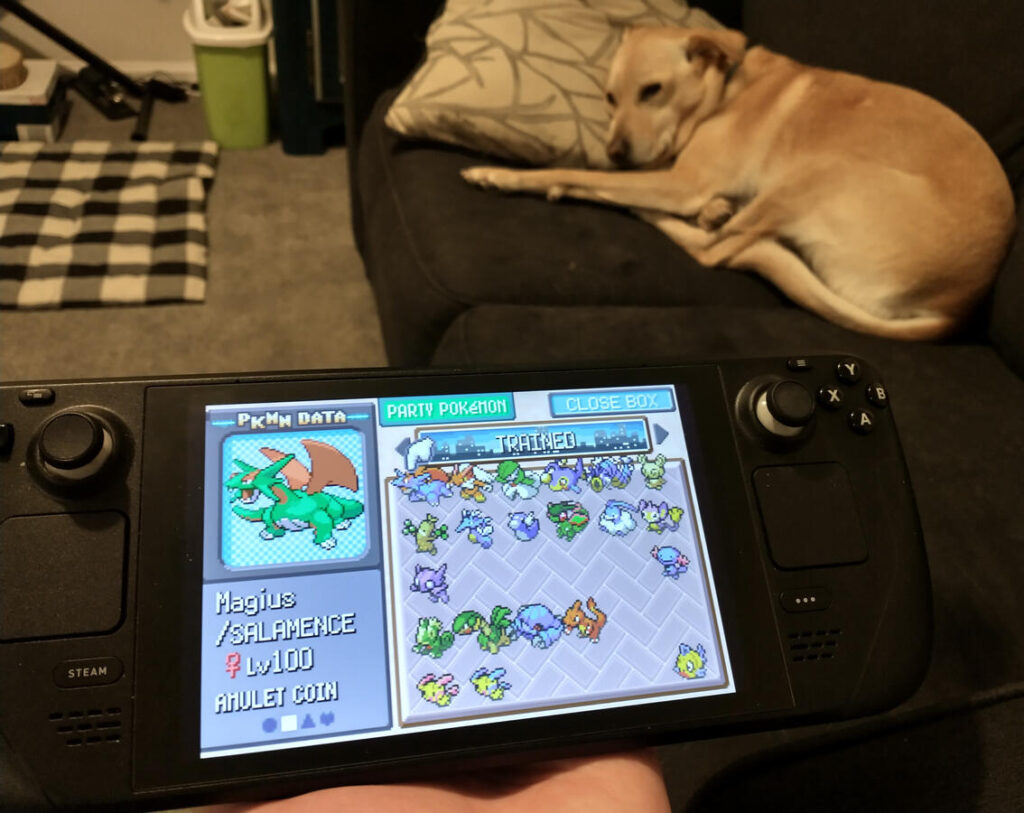A few days ago I got a GBxCart from InsideGadgets. It is a nice little device that I have used to rip all of my old Gameboy games so I can play them in an emulator. It came as a bare PCB, but was designed to match the footprint of a GBA game so that it could mostly fit inside a GBA cart. It doesn’t completely fit inside the cart, though, and the pins on the back of the connector are exposed. After looking around online for a case design I liked, I decided to design my own case for it that could be easily 3D printed with some nice features.
The requirements for the design were that it be fully 3D-printed, fully strain-relieve the cartridge connector, and only use the screw from the empty GBA cart that came with the device.
It took a couple of iterations to get everything to snap together properly, but I’m really happy with the end result. There are hollow tubes going down to the lights on the circuit board, so you can either print it with transparent filament like I did and have most of the light for the LED visible almost as if there was a light pipe. If you want to print with opaque filament, you should also be able to translate the box part 0.2mm down so that your slicer doesn’t print the single-layer window pane.
The only support that should be needed is in the hole for the USB C port. Everything snaps together nicely, but the 3D print might require some post-processing if your printer produces a little elephant toe like mine does.
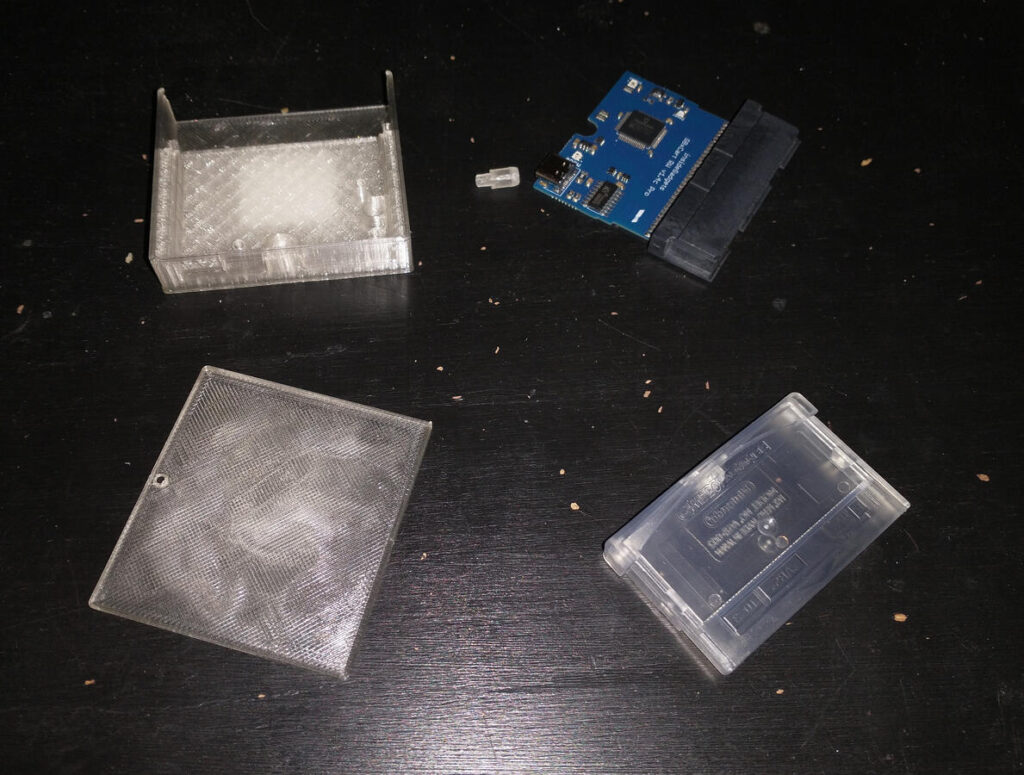
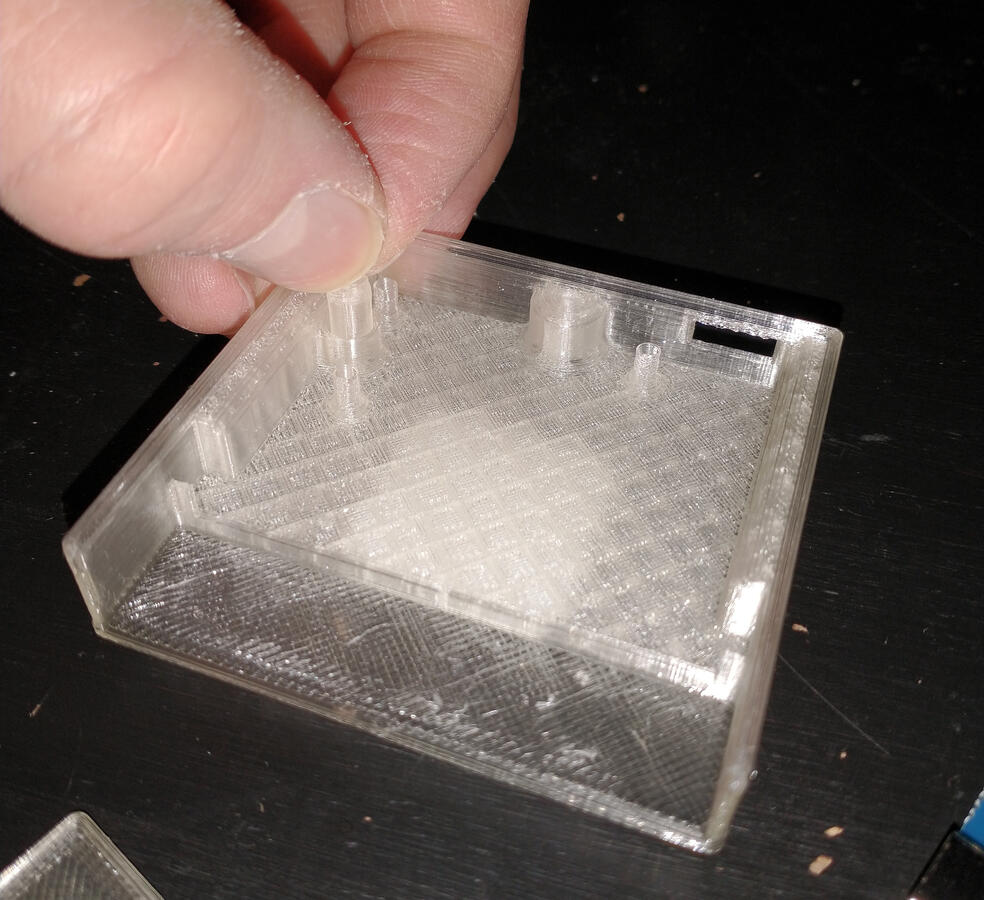
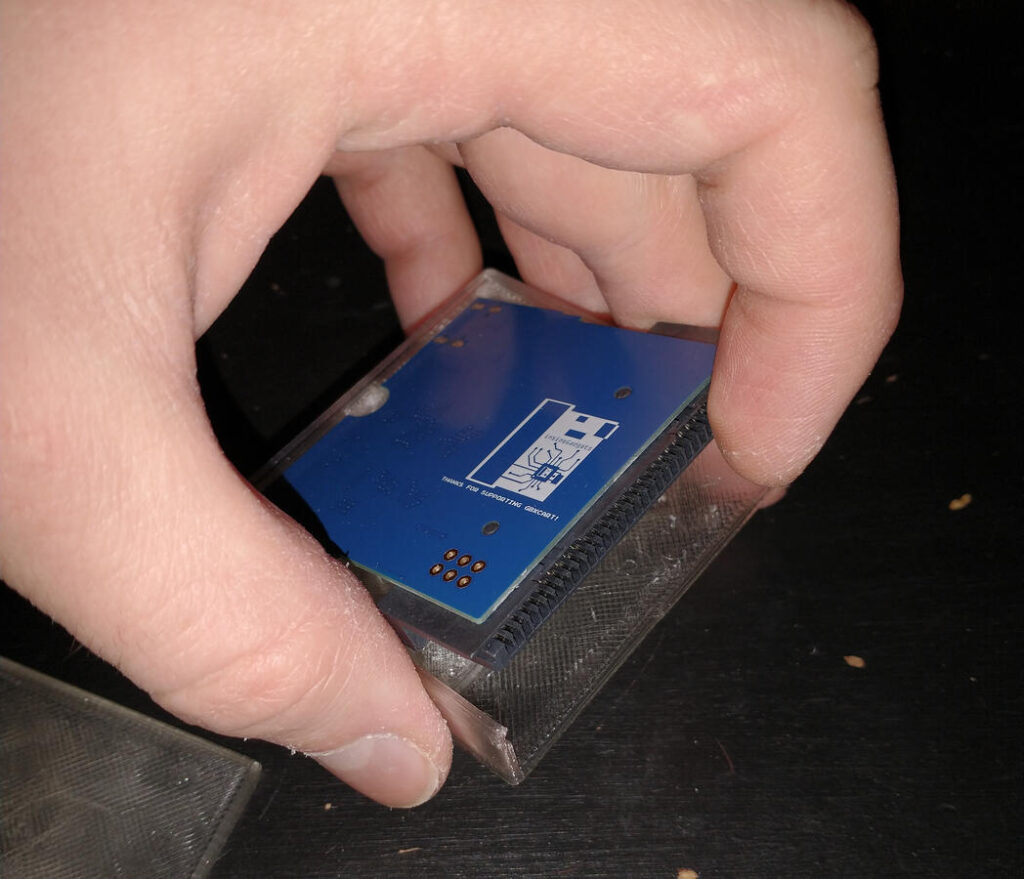
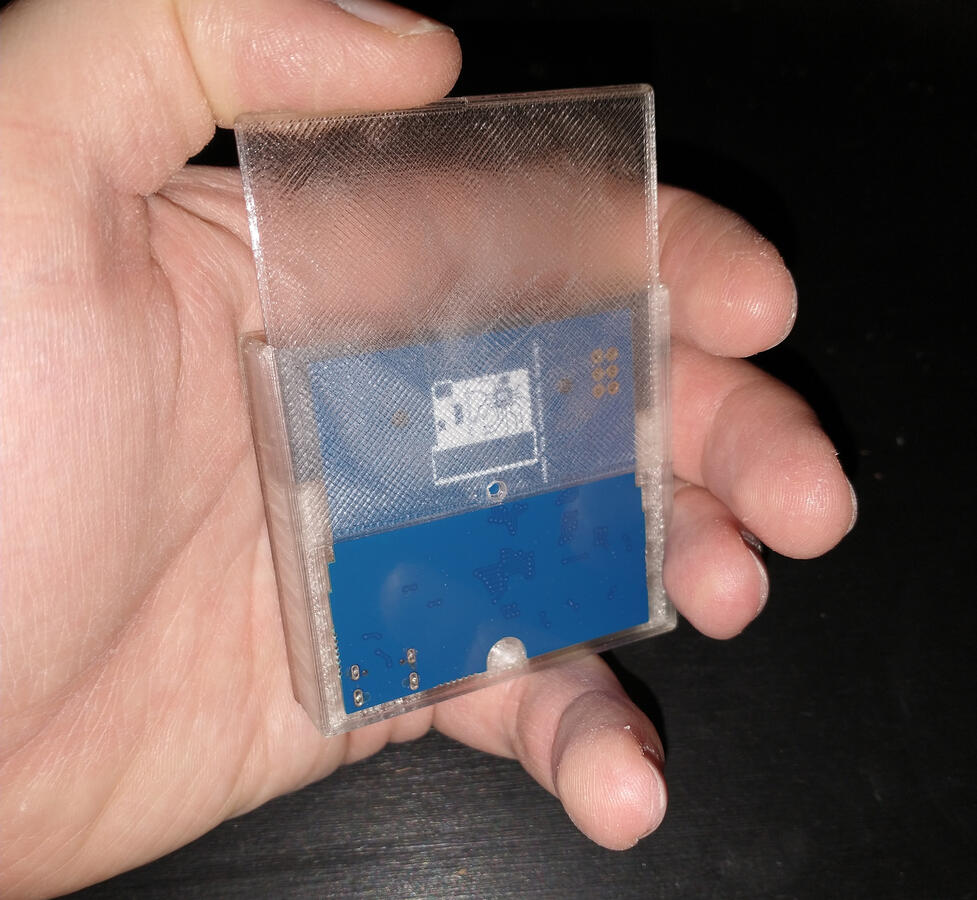
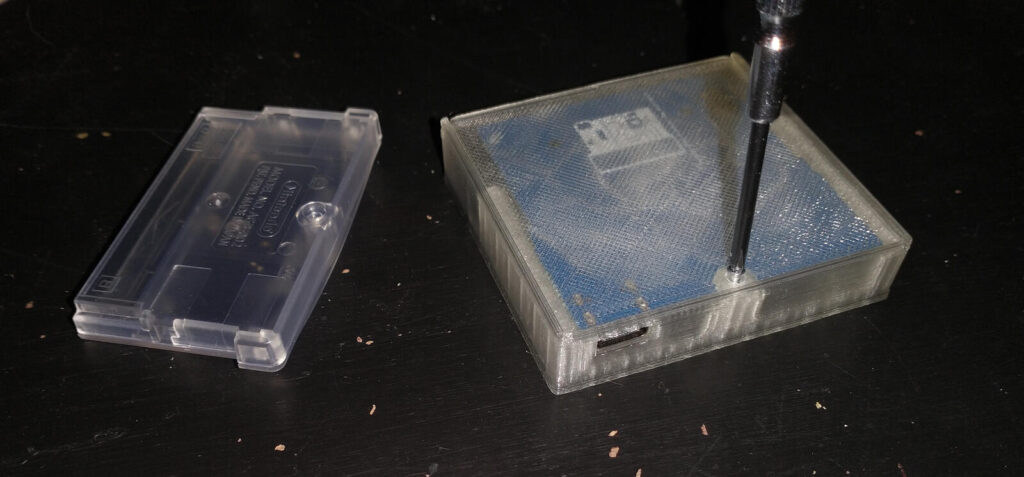
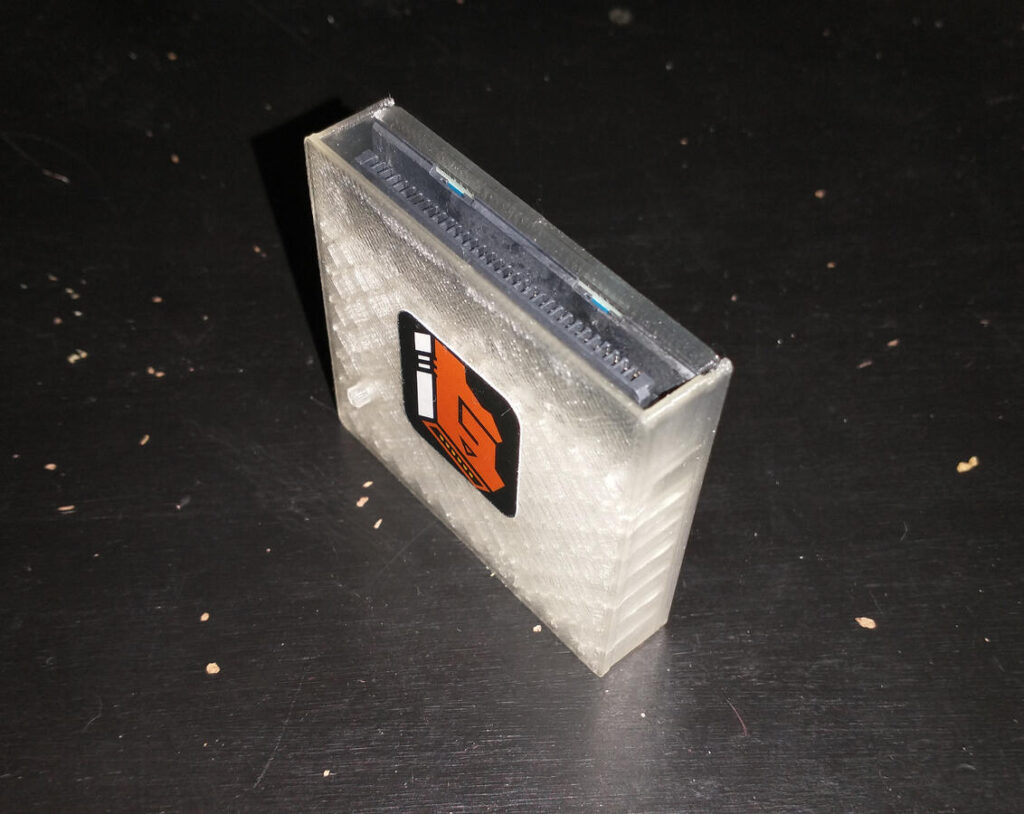
But wait, that’s not all! Those are holes, not light pipes. If you want a higher quality indicator on the surface of the device, you can add your own light pipe. The holes are 1.75mm wide, so you can insert a piece of transparent 1.75mm filament into the hole and cut it flush to make a light pipe.
I would recommend sanding the end flat and bending a little kink into the filament before inserting it. That way, the end you see on the front is nice and smooth and sprung against the inside of the hole, which will hold it in place.
With a light pipe, the indicators are quite a bit more crisp. This would also be a great way to make it look nice with an opaque case, and kind of matches the Gameboy aesthetic.
The light pipes are not perfect, but they greatly reduce the scattering of the light and make it appear as though the surface of the part is lighting up rather than something inside it, which improves the indicator viewing angle.
Now I can play Gameboy games with my original save files on the Steam Deck and take advantage of all the cool emulator features.
You can find the STL files on Thangs here and you can find my parametric design in Onshape here.

